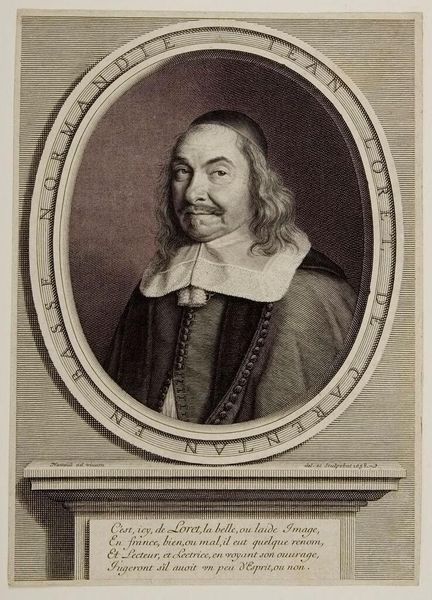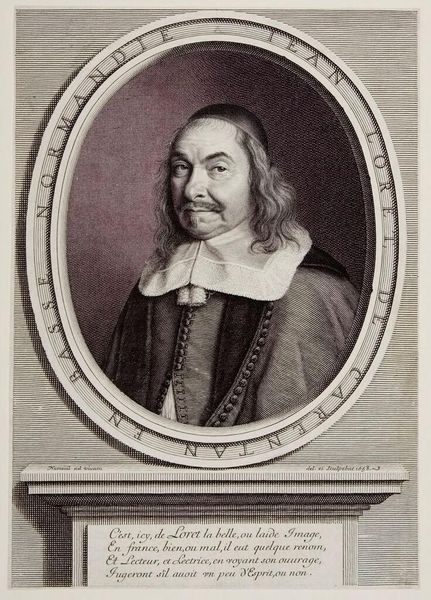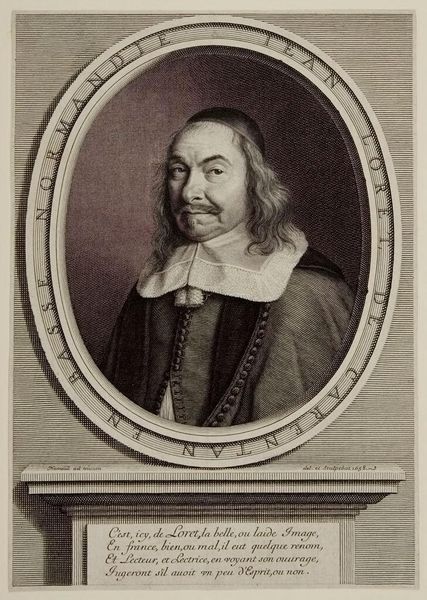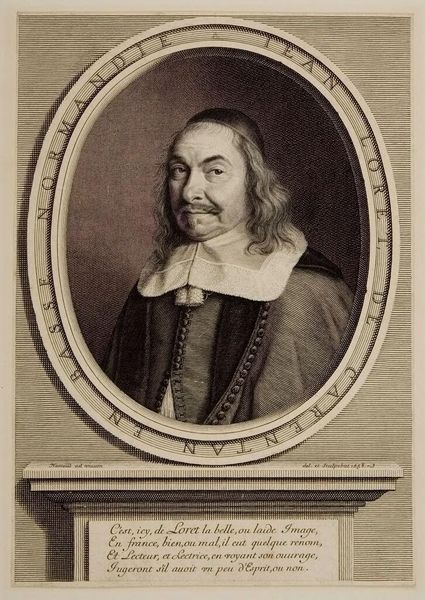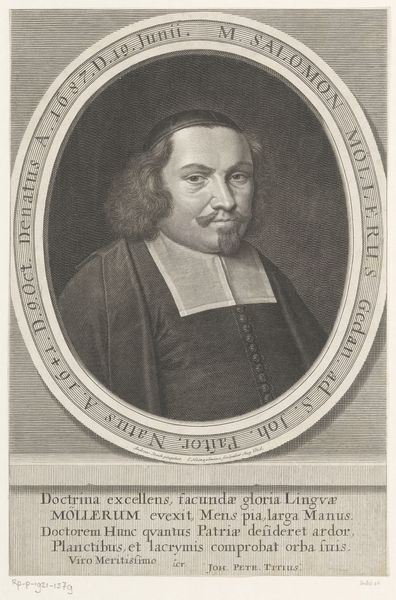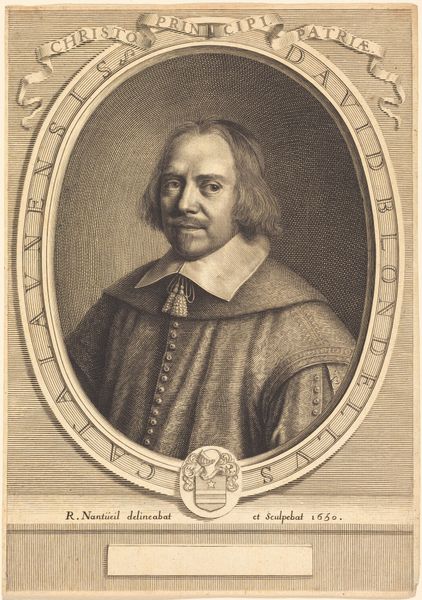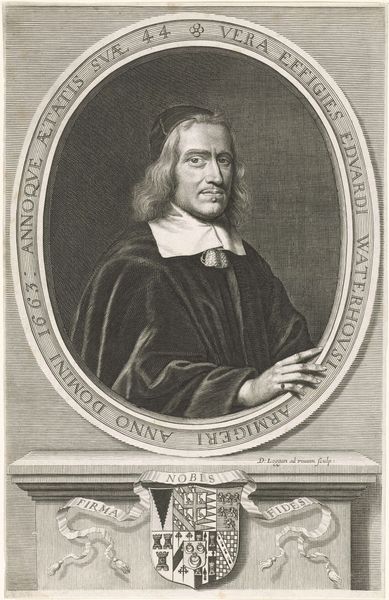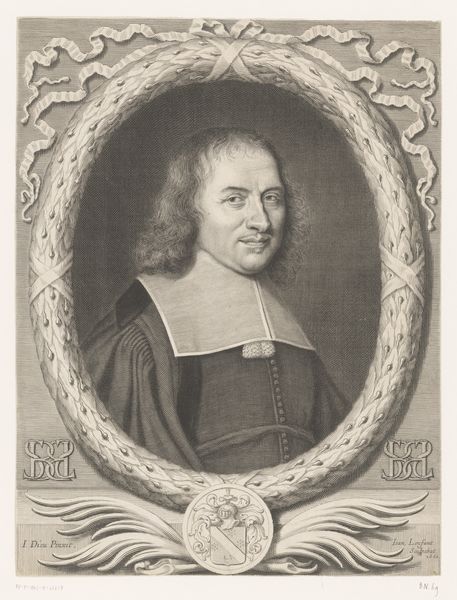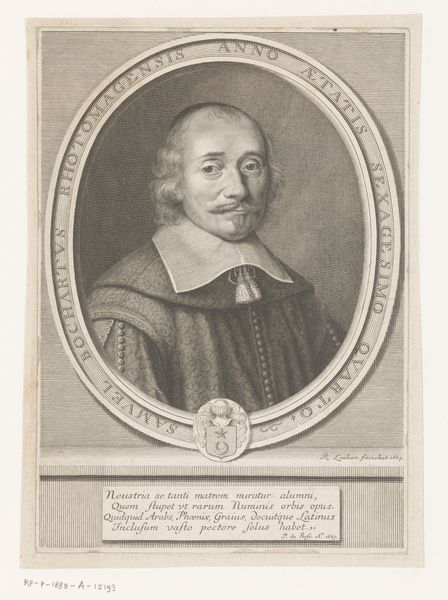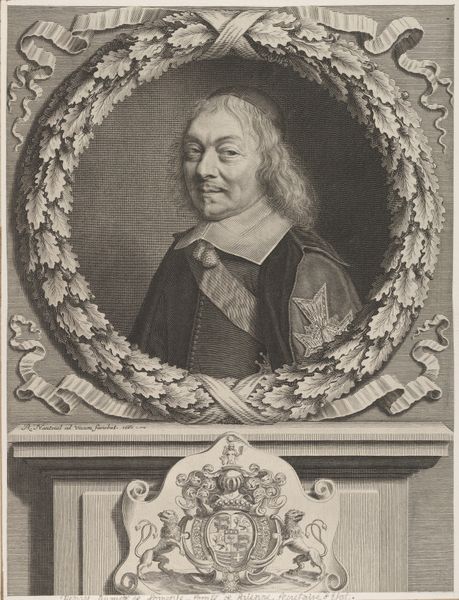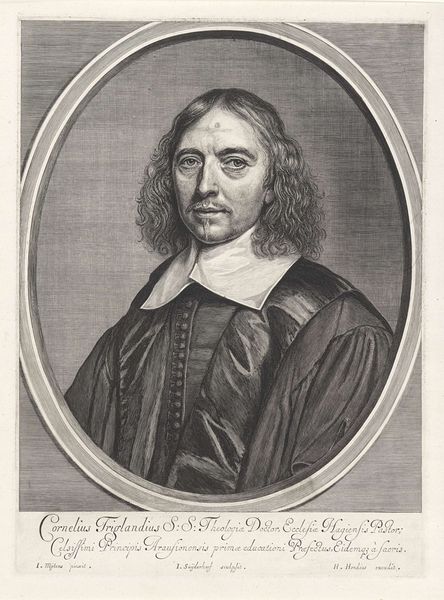
drawing, print, engraving
#
portrait
#
drawing
#
baroque
# print
#
engraving
Dimensions: Sheet: 9 13/16 × 6 15/16 in. (25 × 17.7 cm)
Copyright: Public Domain
Curator: This is Robert Nanteuil’s portrait of Jean Loret, made sometime between 1653 and 1663. It’s an engraving, a print, housed at the Metropolitan Museum of Art. What strikes you about this image? Editor: Well, the detail is pretty amazing. The way he captured the textures, the fabric of Loret's clothes, the lines of his face… How did Nanteuil even achieve that with engraving? Curator: Exactly. Think about the process itself: the labor involved in etching that design into a metal plate. How does the choice of engraving, as a reproducible medium, influence the perception of Loret? This wasn't a unique painting for a single patron. Editor: That’s a great point. Because it’s reproducible, it could reach a wider audience. So, the act of making it an engraving democratizes it, to some extent, right? Who was Nanteuil trying to reach? Curator: Indeed. The production and consumption of these images become significant. This was not just about representing Loret, but also about participating in a developing print market. Were these prints widely circulated and collected? How would someone consume an image of this sort? Editor: It makes you wonder about the role of printmaking in shaping public perception. It’s not just about aesthetics, it's about industry, skill, and the exchange of information. Curator: Precisely. It shifts our focus from individual genius to the socio-economic systems within which art is produced and distributed. So how would looking at more art using this method impact art history overall? Editor: That is truly fascinating. I have a completely different view of this work. Thank you!
Comments
No comments
Be the first to comment and join the conversation on the ultimate creative platform.
